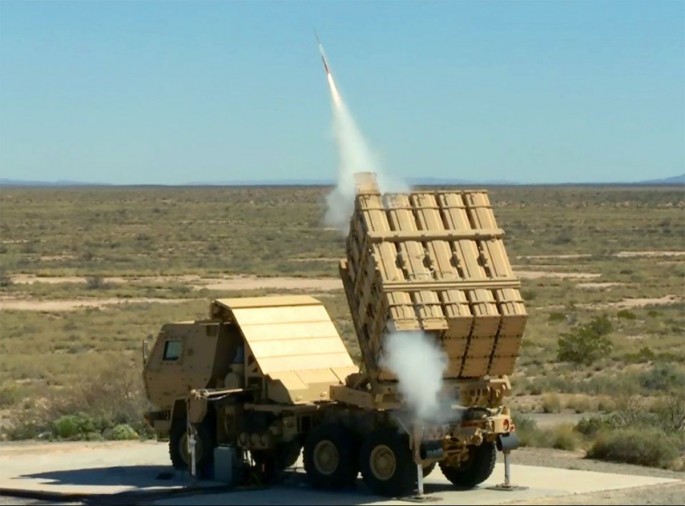A new U.S. Army missile launcher capable of firing different types of defensive missiles to destroy artillery rounds, cruise missiles and aerial drones, among others, has successfully completed another round of test firings.
In its latest feat, the Army fired a Miniature Hit-to-Kill Missile (MHTK); an AIM-9X Sidewinder and an AGM-114 Hellfire missile from its "Multi-Mission Launcher" (MML).
The MML launcher can rotate 360 degrees and elevate from 0-90 degrees to identify and knock-out approaching fire from any direction or angle. It consists of 15 tubes, each of which can hold either a single large interceptor or multiple smaller interceptors.
MML is configured to fire many different kinds of weapons. It fired an AIM-9X Sidewinder missile and an AGM-114 Hellfire missile. Both these weapons are typically fired from aircraft such as the Boeing AH-64D Apache Longbow attack helicopters.
MML is a truck-mounted weapon that's part of an infantry protection program called Indirect Fire Protection Capability Increment 2-Intercept, or IFPC Inc 2-I. This system uses a Sentinel radar and fire control technology to identify and destroy incoming enemy fire and protect friendly forces.
The technology uses a command and control system called Integrated Air and Missile Defense Battle Command System or IBCS.
MML works in tandem with radar and fire-control software to identify, track, pinpoint and destroy approaching enemy air threats with an interceptor missile.
The MHTK missile fired from the MML relies on kinetic energy and not an explosive to destroy its target. To do this, the interceptor must hit its target dead-on, a feat that requires a lot of sophisticated electronics to pull-off.
The army said MML gives its soldiers deployed at a Forward Operating Base the capability to defend themselves from attacking enemy fire. It said MML will greatly help protect U.S. infantry in harm's way and under the most difficult battlespace operating conditions.
Brig. Gen. Christopher Spillman, Commandant of the Air Defense Artillery School, and his team noticed the use of Unmanned Aerial Systems by U.S. enemies was spreading and determined a new system was needed to combat the threat.
"We are the ones that establish the war fighting requirements of the future," said Gen. Spillman.
"We are seeing sort of changes or shifts in the way wars will be fought in the future," said Gen. Spillman.
"One of them is the advent of Unmanned Aerial Systems, they are ubiquitous around the globe and they are being used by our adversaries to deploy indirect fires more effectively. We have to be capable of countering those Unmanned Aerial Systems."



























